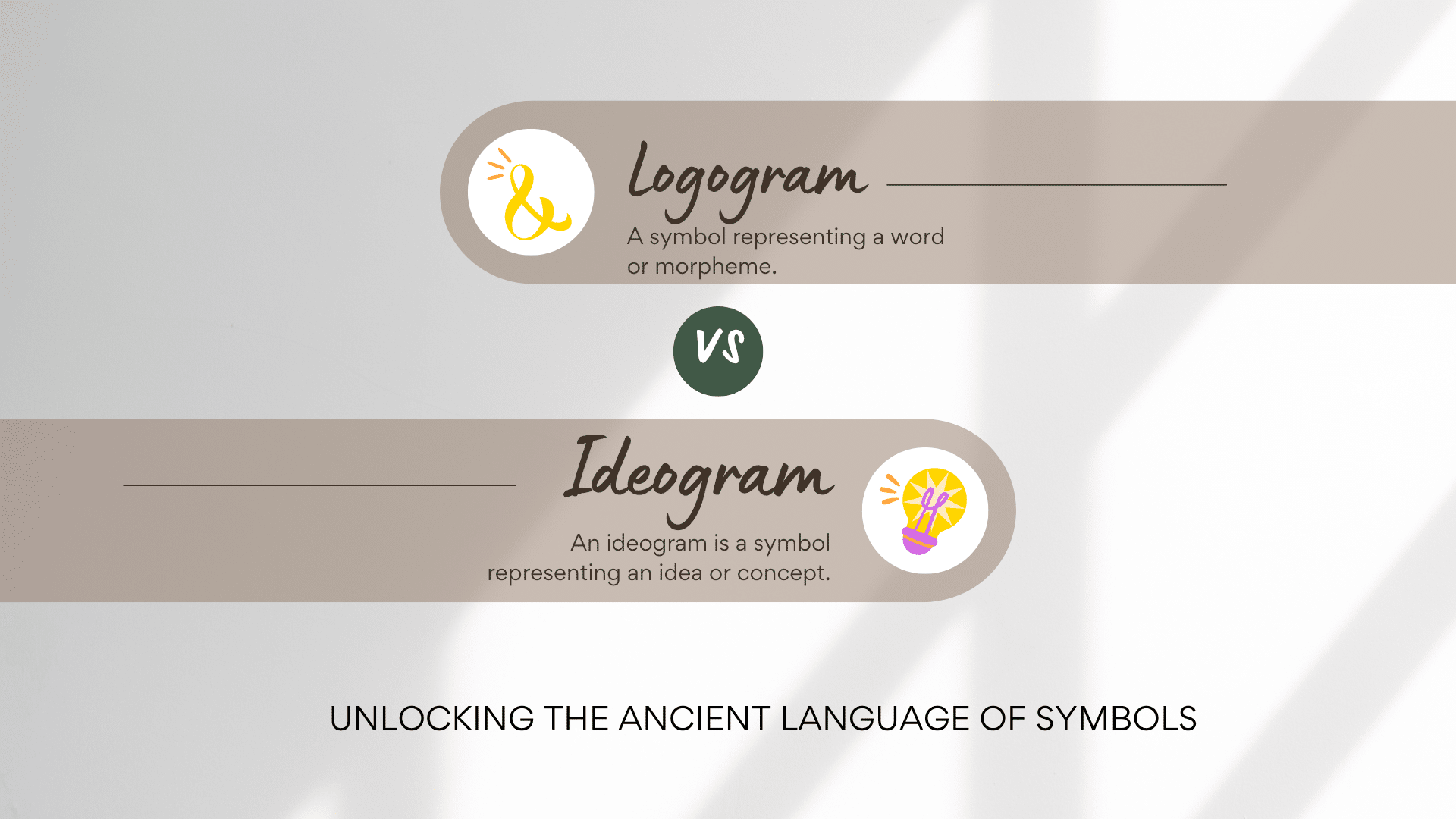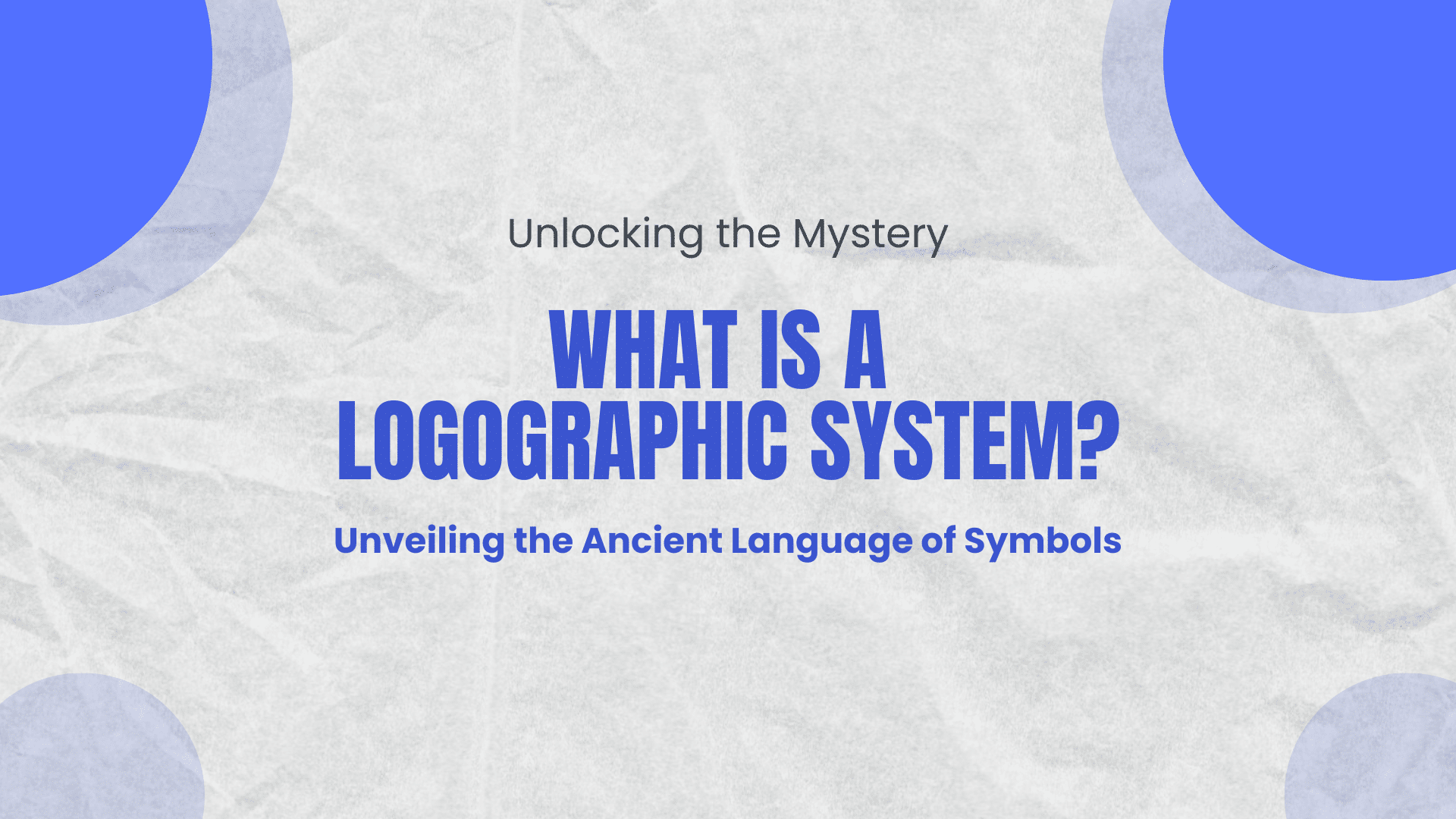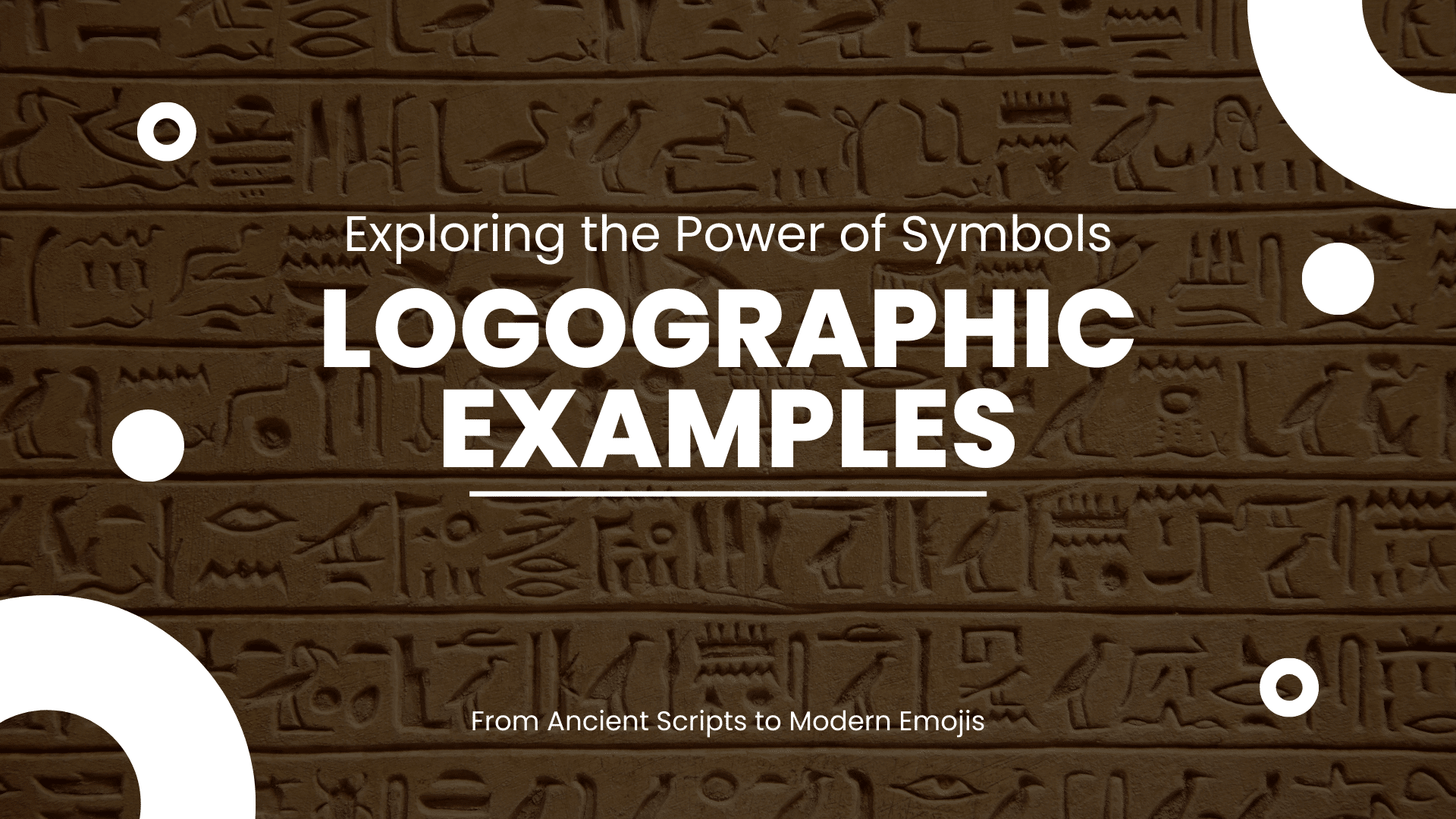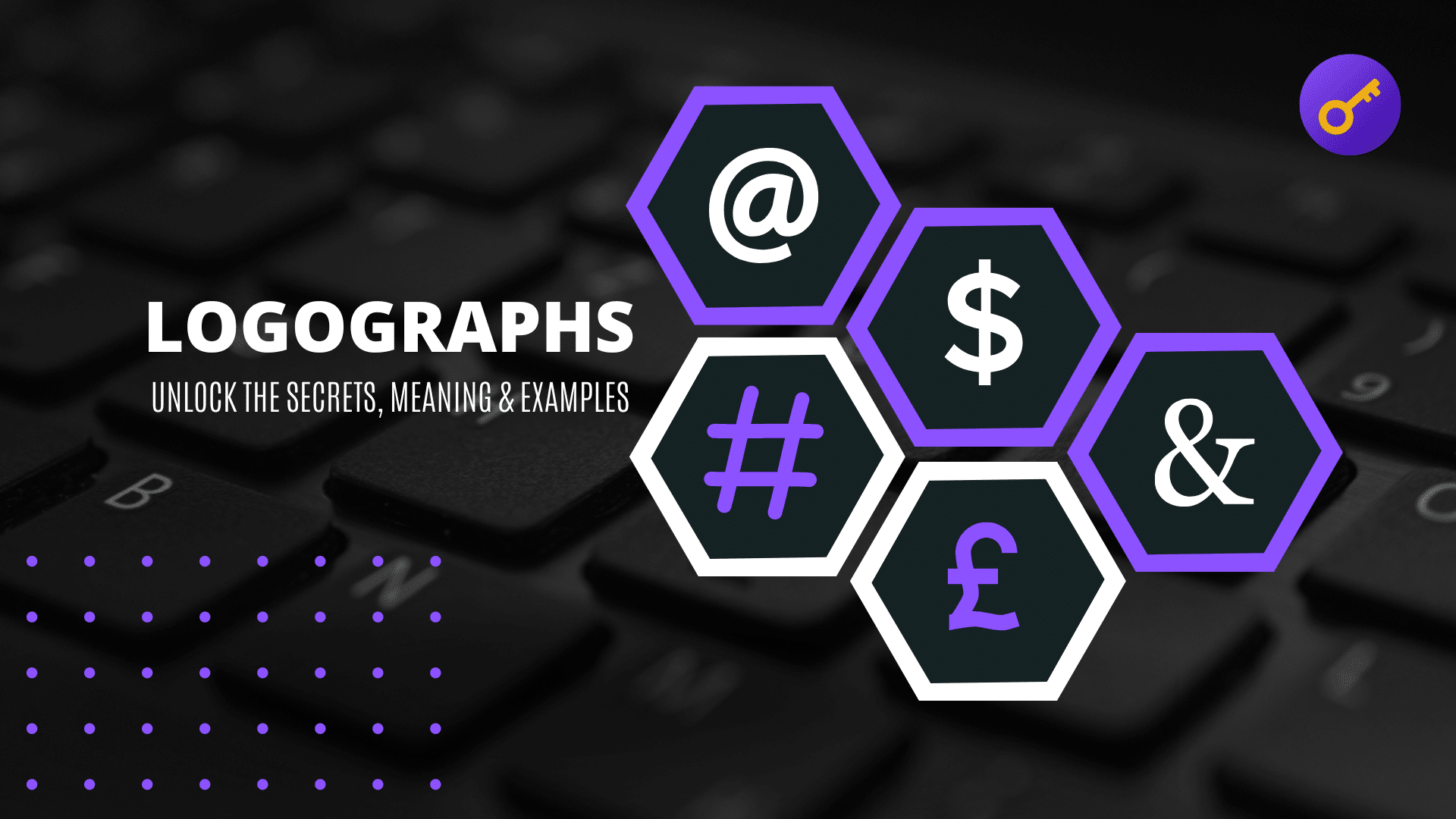Are you fascinated by the mystique of languages with symbols and yearning to unravel their secrets? Often, the biggest challenge lies in deciphering these intricate symbols, each carrying a universe of meaning and history.
This article is your key to unlocking the enigmatic world of symbolic languages. It will help you understand their origins, cultural significance, and the diverse ways they manifest globally.
Embark on this enlightening journey and discover the rich tapestry of languages communicating through symbols.
Continue reading to immerse yourself in the intriguing world of languages with symbols, a journey that promises enlightenment and enjoyment.
Let’s get started!

Here’s What You Will Find

Key Takeaways
Languages with Symbols
Diverse Symbolic Languages: Chinese, Japanese, Korean, and Egyptian Hieroglyphs demonstrate the rich diversity of symbolic communication, each uniquely blending pictograms, ideograms, and phonetic elements to convey deep cultural and historical meanings.
Cultural Significance: Symbolic languages are not just methods of communication but are deeply intertwined with the cultural identity and heritage of the societies that use them, serving as a living link to their rich histories and traditions.
Modern Relevance: Despite their ancient origins, many symbolic languages remain relevant and are actively used today, showcasing their enduring importance and adaptability in a rapidly changing world.
A window into Human Expression: These languages with symbols offer a unique window into the human experience, highlighting how different cultures have developed complex systems of symbols to express ideas, emotions, and beliefs, enriching our understanding of human creativity and communication.
Deciphering the Role of Symbols in Language
Language symbols are like stars in the night sky; they may seem random at first glance, but a complex and beautiful tapestry is revealed upon closer inspection.
In linguistics, symbols extend beyond mere letters and alphabets; they are the building blocks of meaning and communication. Unlike alphabets, which represent sounds, symbols can convey ideas, concepts, and even entire stories.
Understanding symbols’ role in language requires exploring semiotics, the study of signs and symbols. A symbol can represent something else, often with no logical connection between the symbol and what it represents.
This differs from an alphabet, where there is a direct relationship between the symbol (a letter) and a specific sound. For instance, the heart symbol doesn’t resemble the human heart but universally represents love and affection.
Using symbols in language adds layers of depth and meaning, making communication a transfer of information and an art form. Symbols can capture cultural nuances and historical contexts that words alone may not fully encompass.
This is especially evident in languages where one symbol can encapsulate a whole idea or object, like in Chinese or Egyptian hieroglyphs.
Ancient Scripts: The Pioneers of Symbolic Communication
When exploring symbolic languages, one cannot overlook their ancient roots. The earliest forms of writing, such as Sumerian cuneiform and Egyptian hieroglyphs, were heavily symbolic. These ancient scripts were more than just a means of record-keeping; they were expressions of identity and culture.
Cuneiform, developed by the Sumerians around 3400 BCE, is one of the earliest writing systems. It used pictographs, symbols that closely resembled the objects they represented.
As the script evolved, these pictographs became more abstract, ideograms and phonograms, symbols representing ideas and sounds.
Egyptian hieroglyphs are another fascinating example. Dating back to around 3200 BCE, they combined logographic and alphabetic elements.
Each hieroglyph could represent a sound, word, or idea, depending on the context. Hieroglyphs were more than just a writing system; they were integral to Egyptian art and architecture and deeply intertwined with their religion and cosmology.
These ancient scripts laid the foundation for modern symbolic languages, demonstrating the timeless human desire to encode meaning in symbols.
Ancient and Modern Languages with Symbols
Embark on a captivating exploration of the world’s most symbolic languages, both ancient and modern. This journey will take you through the intricate tapestry of scripts that have conveyed human thought, culture, and identity for millennia.
From the ancient hieroglyphs etched in the sands of time to the modern characters dotting our digital screens, each language is a portal into a different era and a different way of understanding the world.
Explore these languages with symbols of rich history and ongoing legacy, where every symbol tells a story and every character is a bridge between the past and the present.
This section is not just an overview but a celebration of human ingenuity in creating languages with symbols that are as visually captivating as they are linguistically profound.
Here’s a closer look at some of the languages with symbols that beautifully intertwine symbols and linguistic expression:
Ancient Scripts: The Roots of Symbolic Communication
As we explore the roots of symbolic communication, let’s turn the pages back to the ancient scripts that laid the foundation for modern linguistic expression. These ancient scripts are not merely relics of a bygone era; they are the keystones of our understanding of early civilizations.
Each script, from the intricate Egyptian hieroglyphs to the enigmatic Indus Valley inscriptions, offers a unique glimpse into our ancestors’ lives, beliefs, and intellect.
Their complexity and beauty continue to captivate scholars, linguists, and history enthusiasts alike, reminding us of the enduring power of symbols in human communication.

Explore these ancient scripts, where each symbol testifies to the ingenuity and creativity of early civilizations.
Ancient Languages with Symbols:
- Egyptian Hieroglyphs: These are the quintessential ancient symbols, offering a glimpse into the mystique of ancient Egypt. Hieroglyphs are a writing system and a collection of powerful cultural symbols.
- Sumerian Cuneiform: Cuneiform script was one of the earliest writing systems used in ancient Mesopotamia. This system of wedge-shaped marks on clay tablets evolved from pictograms to represent sounds and ideas.
- Mayan Glyphs: The Mayans used a complex system of glyphs: logograms and syllabic symbols. These glyphs provide deep insights into the Mayan civilization, their beliefs, and their astronomical understanding.
- Indus Valley Script: Used in ancient India and Pakistan, the Indus script remains undeciphered but is believed to have been logographic. It represents one of the great mysteries of ancient writing systems.
- Ancient Chinese Oracle Bone Script: This is the earliest known form of Chinese writing, used for divination and recording events. These symbols are the ancestors of modern Chinese characters.
Modern Languages Rich in Symbols
In the kaleidoscope of human communication, modern languages rich in symbols vividly testify to our ongoing relationship with symbolic expression.
These languages with symbols, weaving through the fabric of contemporary cultures, offer a fascinating blend of ancient tradition and modern utility. From the elegant strokes of Chinese characters to the rhythmic patterns of Arabic script, each language in this list is a living mosaic of history and innovation.
They demonstrate how ancient symbols have evolved and adapted, finding new resonance in our modern world.
As we explore these languages with symbols, we witness their remarkable ability to convey complex ideas and emotions, bridging gaps between diverse cultures and generations.

Modern Languages with Symbols:
- Chinese (Mandarin and Cantonese): With over 50,000 characters, each a fusion of pictograms and ideograms, Chinese is a testament to symbolic complexity. Every character is not just a letter but a story, a piece of art that speaks volumes about the culture it represents.
- Japanese (Kanji, Hiragana, Katakana): A beautiful mosaic of scripts, Japanese intertwines Kanji, borrowed from Chinese, with its own Hiragana and Katakana, creating a unique blend of symbolic and phonetic writing. This system offers a fascinating insight into linguistic evolution and cultural exchange.
- Korean (Hangul): Hangul is a remarkable phonetic alphabet where symbols reflect the shape of the mouth and throat when making sounds. It’s a perfect example of how a language can be accessible and deeply symbolic.
- Thai (Siamese): The Thai script, an abugida system, intricately combines consonant-vowel sequences into single units. Each character blends phonetic value and cultural storytelling, reflecting the nation’s rich history.
- Tibetan: Tibetan script is a visual treat, with each letter representing an artistic symbol. Rooted in classical Indian scripts, it’s a language that conveys Buddhism’s philosophical and religious depth.
- Arabic: The Arabic script is a flowing, elegant art form used across the Islamic world. It is a symbolic system transcending mere communication, representing a rich cultural identity.
- Sanskrit: Sanskrit’s script is a relic of ancient India. Each character represents a sound and an aesthetic form. This language celebrates the visual aspect of words.
These languages, rich in symbols, are not just tools for communication; they are living embodiments of the cultures and histories they represent.
Each script tells a story, each character a piece of a much larger human puzzle. Whether used in everyday communication or artistic and ceremonial contexts, these symbolic languages or logographs offer a fascinating glimpse into how humans express their thoughts, beliefs, and identities.
Symbolic Systems Beyond Traditional Languages
The world of symbols extends beyond spoken languages into mathematics, science, music, and computing. In mathematics, symbols like π (pi) or ∞ (infinity) represent complex concepts concisely. Scientific symbols, whether they’re chemical elements like H2O for water or astronomical symbols like ☉ for the sun, convey universal scientific ideas.
Musical notation is a language of symbols on its own. Notes, clefs, and keys on a stave communicate how a piece of music should be played, transcending spoken language barriers. This symbolic system allows for the global sharing and interpretation of music.
Computer programming has emerged as a new form of symbolic language in the digital age. Programming languages like Python or Java use symbols and syntax to create complex instructions for computers to execute. Though abstract to the uninitiated, these symbols form the backbone of the digital world.
The Cultural and Social Impact of Symbolic Languages
Symbolic languages are communication tools and carriers of cultural identity and heritage. In many cultures, the ability to read and understand symbolic scripts is a source of pride and a connection to their history.
For instance, Chinese calligraphy is not just about writing characters; it’s an artistic expression deeply rooted in Chinese culture.
In literature and art, symbolic languages often play a central role. They provide a rich source of symbolism and metaphor, allowing artists and writers to convey deeper meanings and themes. The use of symbolic languages in religious texts and rituals also highlights their spiritual significance.
Learning and Interacting with Symbolic Languages
Learning a symbolic language is like unlocking a secret garden of linguistic treasures. It demands not only the memorization of myriad symbols but also an immersion into the rich cultural and historical contexts that give them life.
Each symbol is a key to deeper understanding, and each character is a window into the soul of a culture. This journey, while daunting due to the complexity and depth of these languages with symbols, is immensely rewarding. It offers not just linguistic proficiency but a profound appreciation of the cultural narratives and philosophical concepts woven into the fabric of these languages.
In today’s digital era, the daunting task of learning these symbolic languages has been significantly eased. Technology has revolutionized language learning, making these ancient scripts accessible to learners worldwide.
Language learning apps, with their interactive and user-friendly interfaces, make memorizing symbols engaging and effective. They often incorporate mnemonic devices, visual aids, and gamified learning experiences, which are particularly helpful in mastering languages rich in symbols.
Online courses offer structured learning paths, often led by expert instructors who provide language lessons and cultural insights. These courses can range from beginner to advanced levels, catering to the needs of diverse learners. They offer the flexibility to learn at one’s own pace, breaking down the barriers of time and location that once hindered language acquisition.
Furthermore, digital dictionaries have become invaluable tools. They offer instant translations, example sentences, and sometimes even audio pronunciations. This accessibility to information helps learners quickly grasp the meanings and usage of complex symbols, significantly easing the learning curve.
The digital age has also fostered a global community of language learners, offering platforms for interaction, exchange, and mutual support. This sense of community is particularly beneficial when learning languages with symbols deeply rooted in cultural and historical contexts, as it allows for a more immersive and holistic learning experience.
In summary, while learning a symbolic language is challenging, the tools and resources available today make it achievable and enriching. These languages with symbols open doors to understanding diverse cultures and histories, enriching one’s world perspective.
FAQs
Are symbolic languages harder to learn than alphabetic languages?
Learning a symbolic language can indeed present unique challenges compared to alphabetic languages, primarily due to the sheer number of symbols and the cultural nuances embedded within them. However, with the right resources and dedication, it’s a thoroughly rewarding endeavor.
Can I learn a symbolic language using online tools alone?
Online tools, such as language learning apps and courses, are incredibly effective for learning the basics and practicing. However, gaining fluency often requires immersive experiences, like interacting with native speakers or engaging with the culture directly.
How relevant are ancient symbolic languages today?
Ancient symbolic languages, such as Egyptian Hieroglyphs or Sumerian Cuneiform, hold immense historical and cultural significance. They are key to understanding our past and are often studied in archaeology, history, and linguistics.
Do symbolic languages influence modern-day communication?
Absolutely. Many modern languages, such as Chinese and Japanese, are rich in symbols and continue to be widely used. Additionally, the symbolism in these languages often influences art, literature, and even digital communication, like emojis.
What are some tips for memorizing symbols in these languages?
Visual association techniques, practicing writing, and frequent exposure to the language in context (like reading or listening to native content) can be highly effective. Language learning apps that use spaced repetition systems are also very helpful.
Is understanding the culture important when learning a symbolic language?
Yes, cultural understanding is crucial. Many symbols in these languages are deeply intertwined with cultural and historical contexts, so learning about the culture can greatly enhance your understanding and appreciation of the language.
How can I experience the culture behind a symbolic language without traveling?
Engage with cultural media like films, books, and music in the language. If available locally, participate in online communities and cultural events or festivals, which can also provide valuable cultural insights.
Feel free to ask any more questions or share your experiences learning these fascinating languages!
Last Thoughts
The study of symbolic languages is a journey into the heart of human communication and expression. As our world becomes increasingly interconnected, understanding these languages becomes not just an academic pursuit but a bridge to other cultures and histories.
We invite you to explore this fascinating world and discover the rich tapestry of meaning in languages with symbols.
Before You Go
If you’ve found this journey through the world of languages with symbols as fascinating as we did, why not spread the joy of discovery?
Share this article with friends, family, or anyone curious. It’s a wonderful way to connect with others through symbolic communication’s intriguing and diverse world.
Whether your gesture is to spark an interesting conversation, enrich someone’s knowledge, or simply share the beauty of these languages, it could open up new worlds of understanding and appreciation for the rich tapestry of human expression across cultures and time.
Share away, and let’s keep the flame of curiosity and learning burning bright!
More on Logographs
Logograph vs Ideograph: Deciphering the Language of Symbols
If you’ve ever been intrigued by languages like Chinese or Egyptian hieroglyphics, you’ve explored logography. And if you’ve ever tried to decipher traffic signs or pondered the meaning of emojis, you’ve had a brush with …
Check it Out!Unlocking the Mystery: What Is a Logographic System?
How Logographic Symbols Shape Language and Thought! You might be wondering, “What is a logographic system?” That’s a Good question! Imagine an alphabet, but instead of letters representing sounds, each symbol represents a word or …
Check it Out!Logographic Examples: Unlocking the Secrets of Ancient Civilizations in Your Everyday Texts!
From Ancient Scripts to Modern Emojis Are you curious about the world of logographic examples and what these symbols might signify? This article promises to demystify these symbols, offering a comprehensive exploration of their history, …
Check it Out!Logographic Language: Discover How Symbols Can Speak Louder Than Words!
Are you fascinated by the intricate world of logographic language, where symbols convey entire words or phrases? Ever wondered how these captivating scripts, like Chinese or Ancient Egyptian hieroglyphs, differ from the alphabet-based systems we …
Check it Out!Logographic Reading: Unlocking the Mysteries of Ancient Symbols in Modern Times!
Are you fascinated by the intricate world of logographic reading and eager to decode the secrets behind these captivating symbols? This article is your key to unlocking the rich history, profound significance, and intriguing complexities …
Check it Out!Logographic Cues: Cracking the Code of Visual Communication
Are you curious about symbols that communicate a world of meaning at a glance? Have you ever wondered how logographic cues convey complex ideas so succinctly? Here, we’ll unravel the mysteries of logographic cues, offering …
Check it Out!Logographs vs Glyphs: Unraveling the Mysteries of Ancient Scripts
How Logographs and Glyphs Shaped Our World! Are you fascinated by the world of symbols and their hidden meanings? Have you ever pondered the distinction between logographs and glyphs? This article is tailored to demystify …
Check it Out!Logographs: Decoding the Secret Language of Symbols
Are you intrigued by the symbols we use in everyday communication, like “<3” or “LOL”? Wondering how these simple characters carry rich meanings and histories? This article is your gateway to understanding the fascinating world …
Check it Out!More on Symbols





















